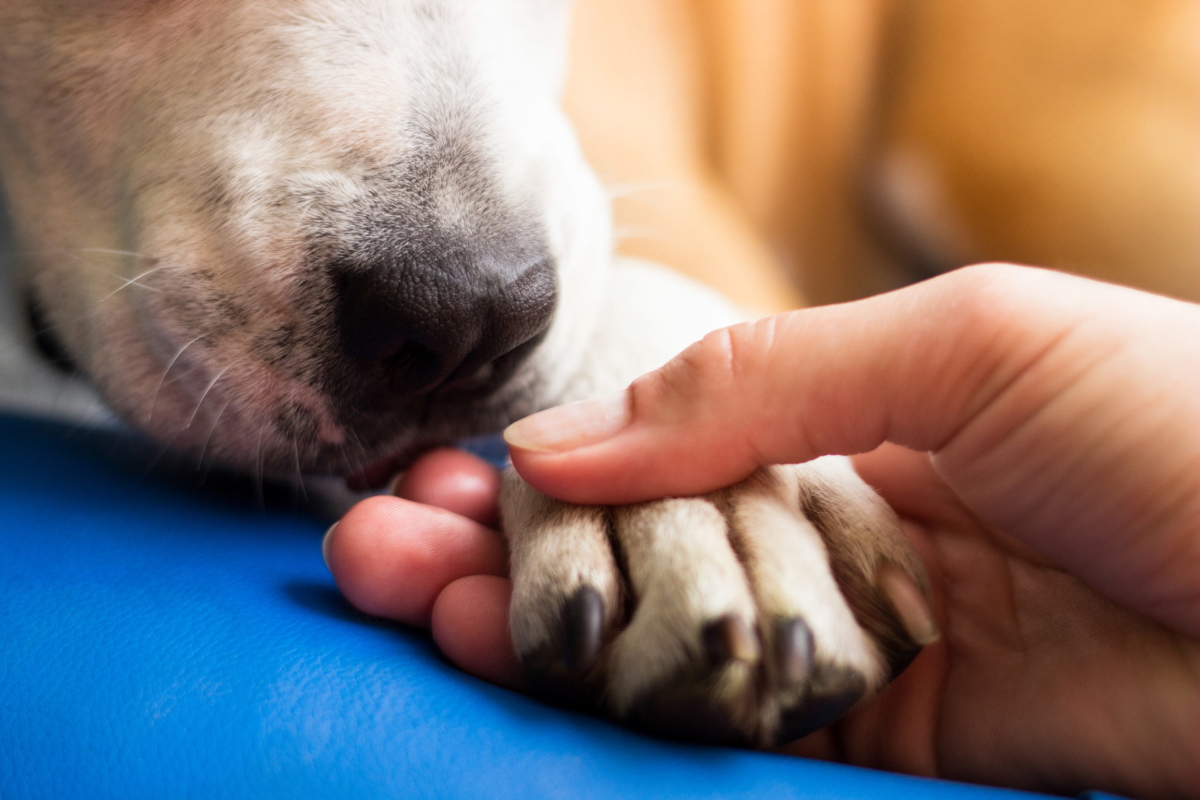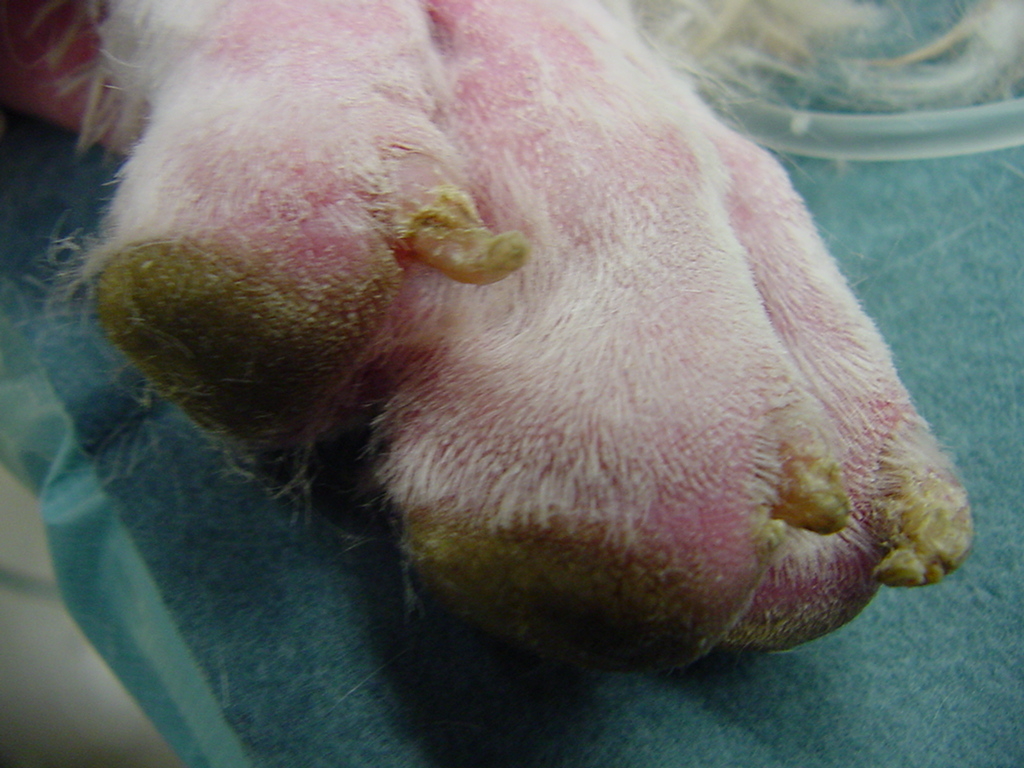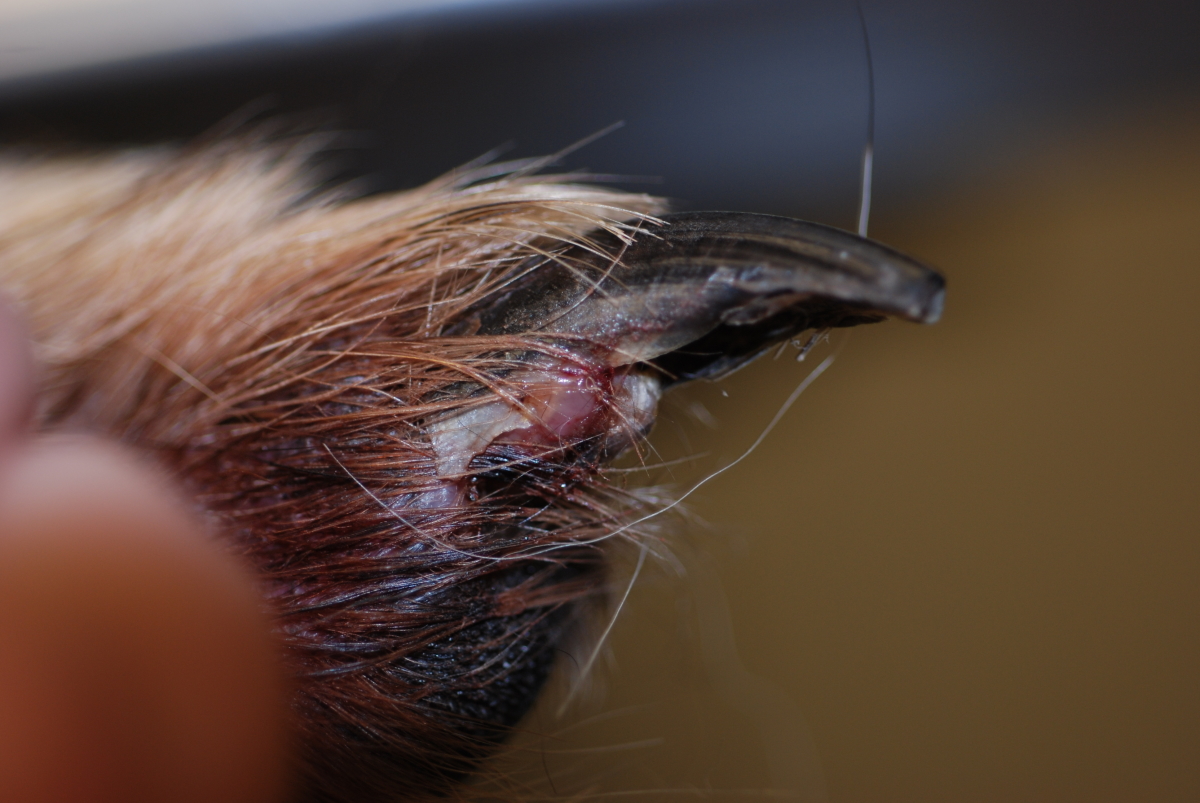Derm Spotlight: Dog Claw Disease aka Symmetric Lupoid Onychitis (SLO)
SLO in Dogs: Often Undetected and Very Painful

What is Symmetric Lupoid Onychitis (SLO)?
This is an autoimmune condition that only affects the claws. The immune system targets multiple claws on more than one paw causing claw distortion and loss. Initially, one or two claws are lost, then over a course of weeks to months all the claws are lost. The claw then slowly regrows abnormally. This condition is uncommon to rare in dogs. It has been reported in young to middle aged dogs. And seen more commonly in German Shepherds, Gorden Setters, and Rottweilers. However, any breed can be affected. This condition does not affect cats.
What causes SLO?
The exact cause of this condition is unknown. However, studies have confirmed a genetic predisposition to this condition.
What does SLO look like?
Affected claws are absent or regrow abnormally developing an odd shape, become brittle, and/or discolored. The affected claws are painful to the touch and to walk on.

Photo 1: Example of a patient with SLO. All claws are brittle with an odd shape.
How is SLO diagnosed?
This is a clinical diagnosis where abnormal claws are identified without any other skin changes. A biopsy is usually not required for the diagnosis of this condition. Few dogs have had an adverse food reaction associated with the claw loss.
How is SLO treated?
The medication recommended to treat this condition include fatty acids in combination with other therapies such as pentoxifylline, doxycycline, and niacinamide. When these medications are unsuccessful, then stronger medications such as steroids and cyclosporine are required. Clinical improvement is usually seen within 3 to 4 months after starting therapy. Many dogs will require treatment long term to prevent relapses.

Photo 2: Example of a patient with SLO. The outer cornified layer of the claw has separated from the deep tissue of the dermis.
What is the prognosis of SLO?
The prognosis for this condition is good with prescribed medications, although few claws may remain deformed. Medications may be needed long term to maintain remission.
References:
- Hnilica, KA. Small Animal Dermatology, 3rd Edition. Elsevier St. Louis Missouri 2011. Page 210.
Campbell, KL, Griffin, CE, Miller, WH. Muller & Kirk’s Small Animal Dermatology, 7th edition. Elsevier St. Louis Missouri 2013. Pages 707-708.
- Jul, 06, 2022
- Allergy News, Disease Spotlight

